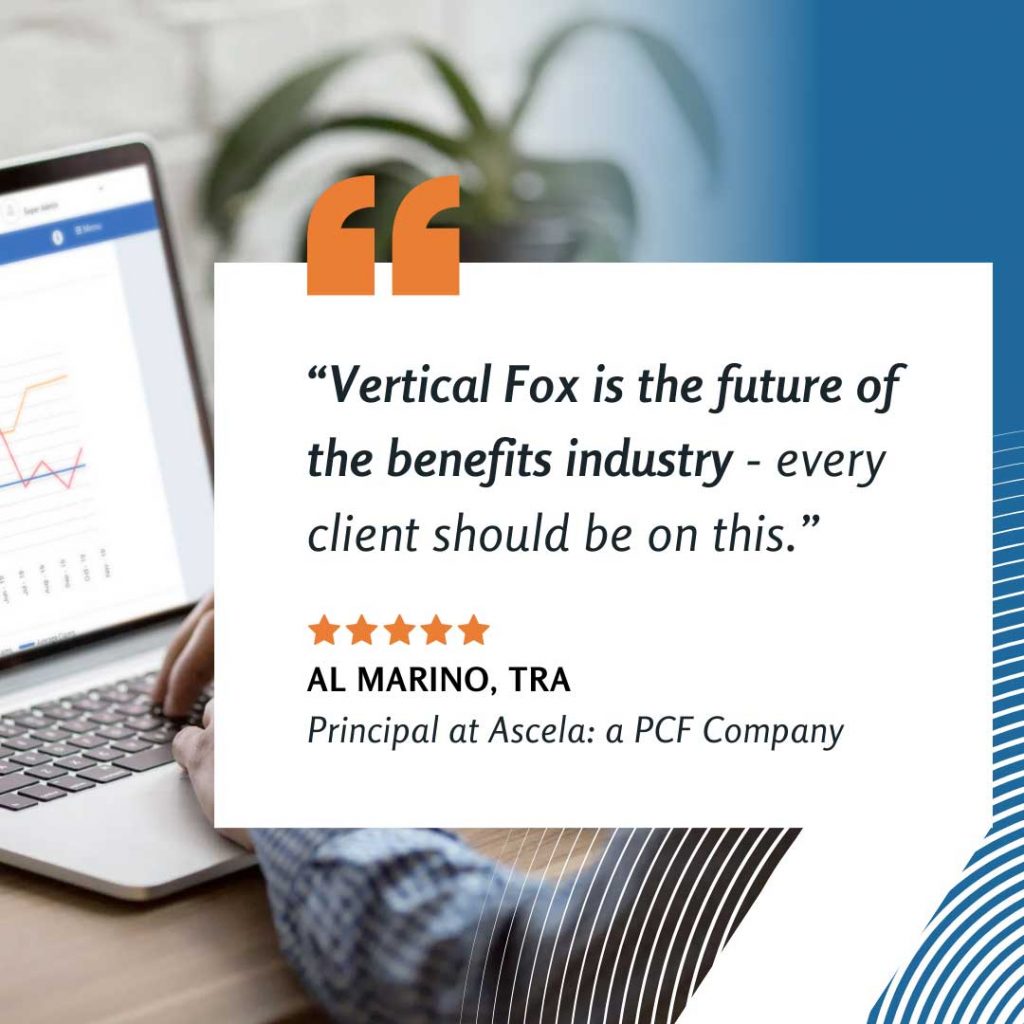What does good consulting look like? Can an employer really evaluate your expertise?
In his book, “Selling the Invisible,” Harry Beckwith suggests that “invisible” services like benefits consulting are extremely difficult to evaluate.
As a result, most people don’t actually make relationship decisions based on the expertise of the service provider; but, rather, by how much of a connection they feel with the person, the person’s integrity, and whatever signs exist that they might provide good service.
While there are obviously certain tangible outcomes in a benefit consulting relationship, many employers hire, fire, or retain consultants based on “a feel” for how good a job they are doing as well as customer loyalty based on perceived good service.
Since it is very difficult for employers to judge your expertise they look for tangible clues in their day-to-day encounters with you and your team to either help validate or call into question their business relationship with you and your organization.
With an understanding of how much weight is placed on tangible encounters, it’s easy to see that good is not good enough when servicing your clients.
In the past few decades, customer service has declined across all industries.
This decline creates a huge opportunity for you to differentiate yourself and build long-term relationships with clients.
Client loyalty and retention often hinge on a mix of emotions and results. What you “do” for a client can be less important than the perceived value of the support you provide.
Do clients have to chase you down for updates or are you proactive with your communication? Are you consistently sharing insights and offering solutions to emerging problems? How do you make your clients “feel?” It may be Pollyanna, but it’s true.
If you were to ask your clients to rate your customer support, which of these levels are they most likely to report:
- Failing your clients
- Meeting client expectations
- Surpassing client expectations
- Delighting your clients
- Amazing your clients
Essentially, are your clients ready to entertain another broker’s value proposition? Or, do they want to recommend you to every HR manager, CEO, and C-suite executive they know?

11 Simple Ways to Improve Your Client Relationships
In our digital age of automated systems and apps for everything, it’s easy to forget some of the most basic foundations of good customer service. This leaves the door wide open for brokers who still focus on the fundamentals.
While some of the techniques covered in this article are straight out of the “Customer Support 101 Handbook,” others are a bit more nuanced. The more you integrate into your workflow, the higher your loyalty and retention rates will become.
- Provide evidence of your customer service
- Offer proactive solutions to problems that don’t exist yet
- Use active listening to mirror a client’s words
- Reply quickly whenever you can
- Build up your “goodwill bank”
- Never leave a client wondering
- Get to know your client’s personal interests
- Share industry news and updates
- Introduce your clients to other (non-competitive) experts
- Take ownership of mistakes and failures
- Pay attention to the small details
Provide Evidence of Your Customer Service:
As shared above, your clients are not expert benefits brokers and do not understand the nuances of your daily responsibilities. They don’t see all the balls you constantly juggle to keep up with the new products, financial arrangements, point solutions, employee engagement tools, technology options, etc. that you need to stay current with to help them provide the right programs at the most competitive costs for their employees.
The simplest way to ensure clients know what you’re doing for them is to tell them.
Incorporate some type of stewardship or project plan into your workflow. Provide a summary of all the ways you service your clients and the outcomes you have achieved as part of your regular workflow. Project plans are great, as they constantly reinforce goals that you have accomplished in collaboration with your client. Utilize benchmarking where appropriate. For example, if your client’s group-specific trend is 2% over the past five years, make sure you highlight tangible results whenever possible.
Even if clients don’t pick up all the breadcrumbs you leave, the overall picture you paint will be of a broker who is consistently on top of their account and providing amazing service.
Offer Proactive Solutions to Problems That Don’t Exist Yet
As an employee benefits broker with your ear to the pavement, you are privy to a wide variety of industry news, trends, and emerging products and services. Your clients probably get bombarded with outreach from dozens of vendors, but don’t have the bandwidth to evaluate all of the possibilities.
Some brokers wait for the client to mention something rather than proactively educating clients. Many look for reasons why a solution won’t work (mostly because they are too busy to really engage on a particular topic) and tell clients, we’ve looked at this and “It’s not right for you” or “You don’t need to worry about this.” This leaves you exposed to other advisors looking for a wedge to start a conversation with your customer.
Instead of simply meeting client expectations, you have a unique opportunity to amaze (and retain) your clients. Instead of waiting for them to come to you, bring new solutions to them proactively, even if you don’t think they are ready to implement the solution today. Helping the HR team stay informed and giving them the tools to share a future vision with their management team is a great way to cement a relationship. Review potential topics with your customer and then build educational reviews of new products, financial arrangements, etc. right into your strategic plan as part of your workflow.
Use Active Listening to Mirror a Client’s Words
How often do you or a team member walk away from a conversation thinking you have a full understanding of what the client wants. Then, after preparing a report or fixing a problem, you come back to them and find out you either misunderstood or didn’t understand the entire issue? That’s a sign of failing your clients.
To flip that narrative and provide amazing customer service, tap into the principles of Active Listening. According to Boston University’s Office of the Ombuds¹:
Your goal as an active listener is to truly understand the speaker’s perspective (regardless of whether you agree) and to communicate that understanding back to the speaker so that he or she can confirm the accuracy of your understanding.
This tool is especially invaluable when a client is frustrated about something and their emotions are leading the conversation. Often, they may not explain things clearly which can lead to unnecessary escalation if you interpret the problem incorrectly.
A powerful phrase to use is, “If I’m hearing you correctly …” then repeat back your understanding of what they said. This will either give them an opportunity to clarify; or, to share how you’ve hit the nail on the head.

Reply Quickly Whenever You Can
How much stronger is your relationship with vendors that consistently reply to your emails within a few minutes (or even hours)? According to a study by the Harbert College of Business², the average response time for an email is 24-48 hours.
Replying quickly builds up your “goodwill bank.”
To delight or amaze your clients, you need to respond quickly … both with solutions to smaller issues and to say “I’m on it” for things that will require more time. That way, when a bigger issue arises, clients are more likely to remember the way you usually service them rather than the exception to the rule.
Email Them Before They Email You
When the inevitable big issues arise, the key to keeping a frustrated client satisfied is to keep them updated … even when there is nothing to update them about. Avoid the black hole of non-communication.
Your client should never have to email and ask, “Can I get an update on my problem?” If you get that email, you have lost your client’s confidence. Replying with, “I was just about to email you an update” rings hollow in their ears.
Get to Know Your Client’s Personal Interests
If you listen well, your clients will inevitably share little tidbits and anecdotes from their personal life. A son’s basketball game. A wife’s promotion. A birthday or anniversary celebration. Pay attention and jot down anything that seems important to them. Showing a genuine interest in things that are important to your clients is not only good from a business standpoint, it is more satisfying for you and your team to connect with clients at a human level.
Attention to personal details creates a connection in a disconnected world: especially in an era where face-to-face meetings are few and far between.
Just how personal you get with clients is up to you. There is no solid rule of thumb and each client is different. The balance comes from ensuring your interactions are both professional and authentic. Think of it like checking in on a friend … a friend who has entrusted you with one of their largest areas of spend and puts food on the table for your family. Coming from a place of genuine gratitude positions every encounter in the best light.

Help Solve Problems They Don’t Expect You to Solve
You and your organization have numerous contacts who are experts in areas you are not. When a client mentions a need that you can’t fulfill, be quick to introduce them to someone who can. Through this interaction, you have managed to help your client beyond the scope of your services.
Graduating to the go-to role of “trusted advisor” is perhaps the pinnacle of the relationship pyramid.
The key to getting there is to listen well and genuinely care about other people, their business, and personal success. It’s worth noting that you should only recommend people you have confidence in. A fascinating aspect of human psychology is that any positive experience your client has with your contact will be subconsciously associated with you … further building up that “goodwill bank.” However, if the ball rolls the other way, the goodwill credit can quickly become a debit.
Take Ownership of Mistakes and Failures
To err is human. To pass the buck on something you did wrong is a sign of failing your clients.
When mishaps happen, it can be an opportunity to strengthen your client relationship. Take ownership. Acknowledge the error and create a plan to correct it. Be proactive and make sure to hold space for your client to vent their frustration without snapping back or defending yourself.
The goal of your interactions should be to make the client feel like you are on their side: working together to solve the problem. Otherwise, your client may soon be Googling, “how to find a new employee benefits broker.”
Pay Attention to the Small Details
With so many balls to juggle, it can be easy to overlook the little nuances and niceties of client interaction. However, to ensure your clients are amazed and delighted, be sure to remember to:
- Get their name right — this includes knowing their preferred nickname. Don’t start your email with “Hi Gregory” when the HR Director prefers Greg.
- Use proper grammar — if you don’t already use Grammarly, go install this free plugin right now to ensure everything you write is properly formatted.
- Avoid jargon — make it easy for your client to understand what you’re saying.
- Tell clients when you’re going away — take a proactive approach and email everyone before you go. Be sure to include a point of contact in case anything blows up while you’re gone.
- Update your OOO message — remember to include your return date along with a backup contact’s phone and email. Also, be sure to turn it off when you get back. Nothing is more unprofessional than hearing, “I’ll be away for the Fourth of July” when it’s snowing outside.
Deliver a consistent client experience
In an industry where the average client retention rate is already fairly high, it can be a challenge to go from “meeting client expectations” to “amazing clients.” The Vertical Fox dynamic benefits platform is another invaluable tool for brokers who want to wow clients, differentiate their firms, win new business, and reduce the amount of time needed to keep all those balls in the air. Schedule a demo today.










